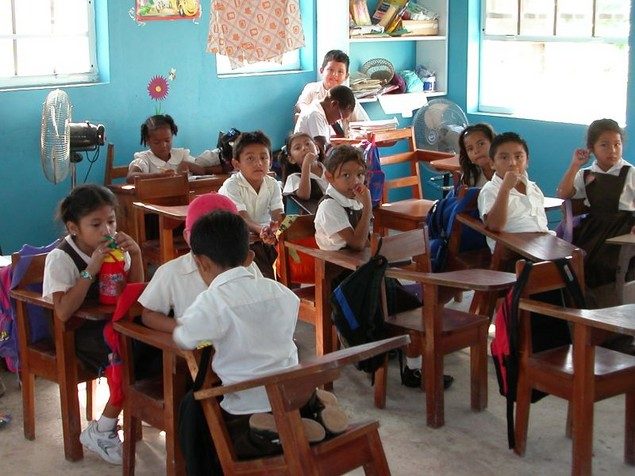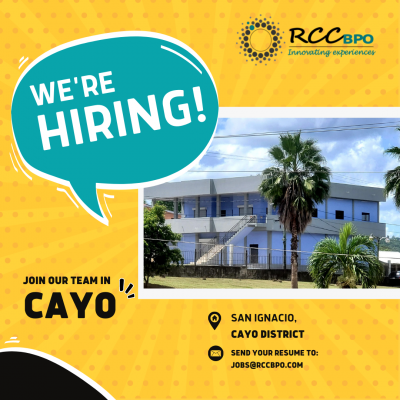- Submit News
- 501-666-6726
- [email protected]

Tourism Minister unafraid of death threats
April 8, 2015
Belize: Warm, Dry Weather with Isolated Showers Will Continue Through the Weekend
April 9, 2015Posted: Thursday, April 9, 2015. 6:24 am CST.
By Charles Leslie Jr.
 In May 2013 the Inter-American Development Bank released a report named – “Challenges and Opportunities in the Belize Education Sector”. The report stated – “Belize is paying a lot for education but getting little. More youth are outside the school system than in it and many fail to make the transition to the workforce. More and more youth drop out of school and become involved in gang activities. Action is needed if Belize is not to lose a whole generation of youth.”
In May 2013 the Inter-American Development Bank released a report named – “Challenges and Opportunities in the Belize Education Sector”. The report stated – “Belize is paying a lot for education but getting little. More youth are outside the school system than in it and many fail to make the transition to the workforce. More and more youth drop out of school and become involved in gang activities. Action is needed if Belize is not to lose a whole generation of youth.”
Channel 5 reported on July 16, 2013 and I paraphrase – The results of the study published by the IDB on challenges being faced within the education sector indicate that Belize is under-performing in comparison with other countries in Latin America and the Caribbean. In addition to outdated instructional models and materials still in use, teachers rely heavily on presentation and repetition, particularly in the area of math, where procedures, drills, practice and memorization of concepts are often combined. As a result, students are too consumed copying from the chalkboard and entering numbers into formulas instead of participating in activities that may aid in the development of analytical and critical-thinking skills. Clearly, the multi-ethnic diversity of the Belizean society is not reflected in the curricula. Subsequently, students do not engage in the lessons being taught because they are not specialized to meet their distinct needs.
According to the IDB report, the issue Belize is currently struggling with is not an isolated case. In fact, evidence from other countries suggests that there is little connection between the levels of public spending and academic achievement. What is equally unfavorable is that government’s course of action has been centered on pumping more monies into the education system with little attention to improving its institutional setup. Taking into consideration that wages and salaries represent over eighty percent of the total expenditures, the huge increase in teacher employment has led to a significant rise in public spending on education.
I fully support teachers getting paid a livable wage, and increases to their wages when necessary. However, we must take some factors into consideration: The IDB report clearly states, that we, as a nation, is already paying a lot for education but getting very little, and pointed out that the contributing factors to this may lie in the structure of our education system.
After doing some research, it seems that the Finland’s education system is so superb and effective, that it keeps popping up in report after report as the epitome of what an education system should aspire to be – it is considered the best value for money education system. I wanted to know why Finland’s education system is so superb and effective: Since Finland implemented huge education reforms 42 years ago, Finland’s school system has consistently come at the top for the international rankings for education systems. So how do they do it? It’s simple — by going against the evaluation-driven, centralized model that much of the Western world uses.
- Finnish children don’t start school until they are 7.
- a) In Belize, our children start school at 5.
- b) In Belize, of all the children eligible to attend pre-school, only 44.3% attend; the lowest in the Latin American and Caribbean region.
- c) In Belize, only 45% of secondary school-aged children attend school, substantially below the regional average of 80 percent.
- d) In Belize, only two in every five children enrolled in primary school complete this level in the prescribed eight years.
- Compared with other systems, they rarely take exams or do homework until they are well into their teens.
- a) In Belize, starting from infant I our children have at least 3 homework assignment per week.
- The children are not measured at all for the first six years of their education.
- a) In Belize, only 48 percent of girls and 38 percent of boys make it all the way through primary school without repeating a grade.
- There are only one mandatory standardized test in Finland, taken when children are 16.
- a) In Belize, students have to take and pass PSE (Primary School Examination) to attend high school (secondary level education).
- b) In Belize, students have to take and pass CSEC (Caribbean Secondary Education Certificate) to attend college (tertiary level education).
- c) In Belize, fewer than half (44%) of standard six (8th grade) students who took the national primary school examination (PSE) in 2011 obtained an overall grade of satisfactory or above.
- d) In Belize, it is worrisome that only 50% of students who took the mathematics CSEC exam in 2011 passed with at least a satisfactory grade (grade level 3 or higher).
- All children, clever or not, are taught in the same classrooms.
- Finland spends around 30% less per student than the United States, for example.
- a) In Belize, we spent approximately $335.50US dollar per preschool student per year.
- b) In Belize, we spend approximately $802US dollar per primary level student per year.
- c) In Belize, we spend approximately $1,453.50US dollar per secondary level student per year.
- d) In Belize, we spend approximately $2,093.50US dollar per University of Belize student per year.
- e) In Belize, we spend approximately $1,601.50US dollar per junior college student per year.
- f) In Belize, we spend approximately $3,390.80US dollar per Institutes for Technical and Vocational Training (ITVETs) student per year.
- 30% of children receive extra help during their first nine years of school.
- 66% of students go to college.
- a) In Belize, tertiary-level enrollment is only 18% attendance rate in Belize.
- b) In Belize, the overall tertiary graduation rate is 15.4%.
- The difference between weakest and strongest students is the smallest in the world.
- Science classes are capped at 16 students so that they may perform practical experiments in every class.
- 93% of Finns graduate from high school.
- a) In Belize, approximately 60% of secondary-school students complete school on time.
- 43% percent of Finnish high-school students go to vocational schools.
- Elementary school students get 75 minutes of recess a day in Finland.
- a) In Belize, students get approximately 30 minutes.
- Teachers only spend 4 hours a day in the classroom, and take 2 hours a week for “professional development.”
- a) In Belize, there remain chronic shortages of trained and qualified teachers at all levels. Fewer than 45% of teachers at the primary and secondary levels are trained.
- Finland has the same amount of teachers as New York City, but far fewer students. – 600,000 students compared to 1.1 million in NYC.
- The school system is 100% state funded.
- a) In Belize, it is partially state funded.
- All teachers in Finland must have a master’s degree, which is fully subsidized.
- a) Fewer than 45% of teachers at the primary and secondary levels are trained.
- The national curriculum is only broad guidelines.
- Teachers are selected from the top 10% of graduates.
- In 2010, 6,600 applicants vied for 660 primary school training slots.
- The average starting salary for a Finnish teacher was $29,000US dollars in 2008.
- a) In Belize, the average teacher’s annual salary is $7,200US dollars in 2015.
- There is no merit pay for teachers.
The IDB report goes on to say that the internal efficiency of the education system in Belize is low, with a large gap between the number of years that children attend school and the number of grades actually completed. In Belize the average 12 year old child has attended school for 6 years but completed only 4 grades. Similarly, at age 17, while students should have attended 12 years of school and completed the secondary level, they have on average been enrolled for only 10 years and completed 8 grades. The average 20 year old has attended school for 11 years but completed only the primary level. Hanushek (2012) notes that “the majority of studies have found that differences in either the absolute spending level or spending increases bear little or no consistent relationship to study achievement.”
The national education strategy for the period 2011 – 2016, which is a continuation with the policies of the 2005 – 2010 plan, is simply not working. Why? it is a paint job on a house that needs to be torn down and built back from a new foundation upwards, with all new modern, updated, proven materials and methods.
In conclusion, the IDB reports states that government policies in Belize have historically been focused on input provision with little attention to reform of the institutional setup of the sector and other policies that have been linked to better educational outcomes. The amount of money and resources being pumped into education is not determining factor to a better education system, it is value for money that we are not realizing.
I implore parents across Belize to demand that we start looking at entirely new education models that are working elsewhere. It seems that a good place to start is with the education system that has been rated the best value for money in the entire world – Finland’s education system. The future of Belize and Belizeans depends on it.
Charles Leslie Jr. is the Chairman of the Belize Unity Alliance and the former independent Chairman of Placencia Village (2010 – 2013). He holds an Associates degree in business, accounting and economics and has over 20 years business experience.
Advertise with the mоѕt vіѕіtеd nеwѕ ѕіtе іn Belize ~ We offer fully customizable and flexible digital marketing packages. Your content is delivered instantly to thousands of users in Belize and abroad! Contact us at mаrkеtіng@brеаkіngbеlіzеnеwѕ.соm or call us at 501-612-0315.
© 2015, BreakingBelizeNews.com. Content is copyrighted and requires written permission for reprinting in online or print media. Theft of content without permission/payment is punishable by law.



































































Comments